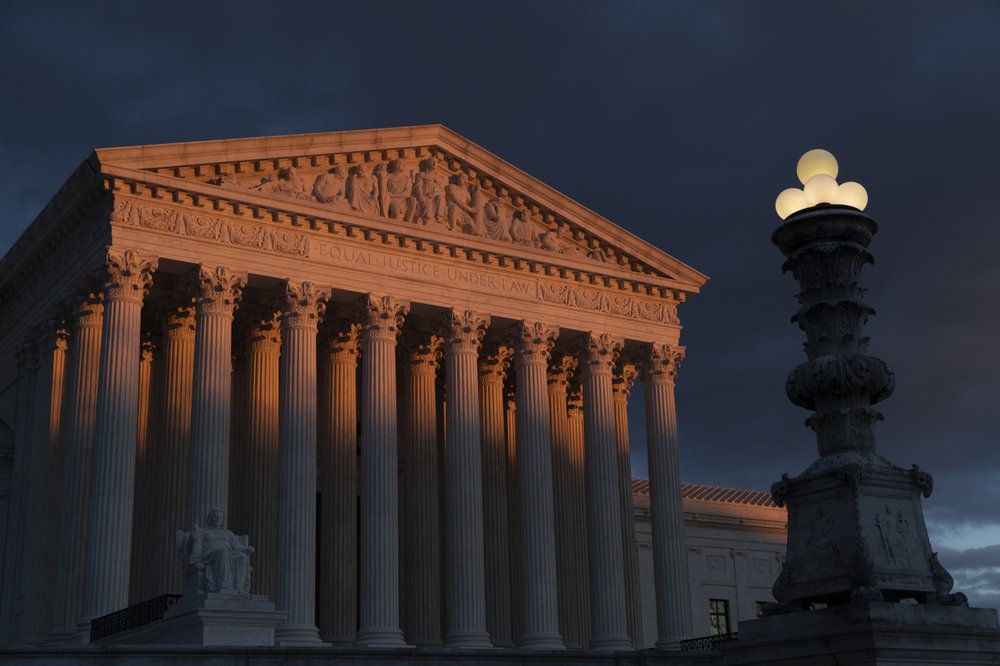National
High court sparks new battle over church-state separation

The Supreme Court elated religious freedom advocates and alarmed secular groups with its Tuesday ruling on public funding for religious education, a decision whose long-term effect on the separation of church and state remains to be seen.
In Espinoza v. Montana Department of Revenue, the high court ruled 5-4 that states must give religious schools the same access to public funding that other private schools receive, preserving a Montana scholarship program that had largely benefited students at religious institutions.
It prompted a jubilant reaction from the reelection campaign of President Donald Trump, who counts religious conservatives as a core part of his base. The campaign lauded the decision as “a victory for educational freedom,” underscoring its importance for a White House that often spotlights religious liberty.
Sister Dale McDonald, public policy director for the National Catholic Education Association, said the ruling has the potential to stem nationwide enrollment declines at Roman Catholic schools that are forcing the closure of hundreds of institutions.
“This is a chance to get public schools and religious schools on equal footing,” McDonald said, adding that the extent of change would depend on how many state legislatures opt to expand tuition assistance.
Critics assailed the decision as another in a series of setbacks for a principle with long roots in the U.S. legal system.
It is “the latest in a disturbing line of Supreme Court cases attacking the very foundations of the separation of church and state,” said Daniel Mach, director of the American Civil Liberties Union’s freedom of religion program.
Tuesday’s ruling focused on a program that offered indirect tuition assistance through tax credits rather than direct state aid to religious schools. The court left unresolved the extent to which religious schools may use public funding for explicitly religious activities, such as worship services and religious-education courses. Mach said that issue likely would be the focus of future litigation, given that many religious schools consider doctrinal education to be at the core of their mission.
Others tracking the Montana case stopped short of predicting a major expansion of state funding for religious education.
Douglas Laycock, a law professor at the University of Virginia who co-authored a brief supporting the plaintiffs on behalf of multiple religious groups, described the decision as “incremental” and “building cautiously” on a 2017 case that ruled a Missouri church could use a state grant to resurface its playground.
“But incremental moves have been accumulating since 1986, and what would pretty clearly have been unconstitutional in the ’70s and early ’80s is now, sometimes, constitutionally required,” Laycock wrote in an email.
At least two faith-based organizations joined secular counterparts in opposing the ruling on principles of church-state separation, saying public money for religious education forces people to fund faiths to which they do not subscribe.
“Government funding to religious schools requires taxpayers to support religious institutions and beliefs that may violate their own, something the First Amendment was intended to avoid,” Rabbi Jonah Pesner, director of the Religious Action Center of Reform Judaism, said in a statement.
Rachel Laser, president of Americans United for Separation of Church and State, contended that many of the religious schools participating in Montana’s program had discriminatory policies.
“Members of the faith should fund those religious schools, not the taxpayers,” said Laser, who is Jewish. “It would offend my religious freedom to fund a school that requires belief that Jesus Christ is necessary for my salvation.”
Another attorney who co-authored a brief supporting the plaintiffs, Becket Fund for Religious Liberty vice president and senior counsel Eric Baxter, predicted the ruling will not result in significant new funds flowing to religious schools.
“Legislatures are not compelled to provide this funding,” Baxter said, pointing to language in Chief Justice John Roberts’ majority opinion saying most states with provisions barring aid to religious schools still let them participate in public scholarship programs.
“If they do provide this funding to the private sphere,” Baxter said of states, “then they just have to treat everybody equally.”
Institute of Justice vice president Tim Keller, whose group represented the plaintiffs, told reporters that Idaho, Texas, South Dakota and Missouri were among the states most likely to create school choice programs that include religious education.
Arizona has had such programs in place for several years, enabling Catholic schools there to reverse enrollment declines that were due at least in part to parents’ inability to afford tuition.
McDonald, of the Catholic education association, also predicted that the ruling would bring swift changes in Maine and Vermont, where parents have been able to get public funds for tuition at secular private schools, but not at faith-based schools.

